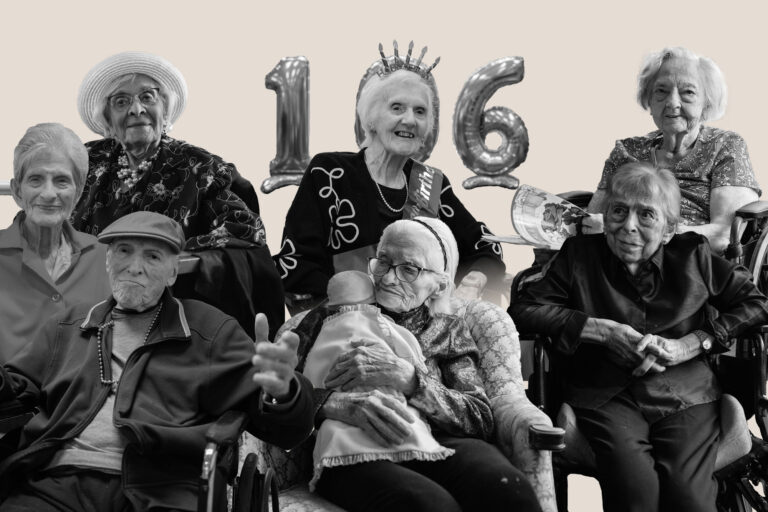
Vicki is a registered dietitian nutritionist, lifestyle nutrition expert, writer, culinary and media consultant and author of two books.
It’s no secret that aging takes a toll on the body’s systems — including the heart. But you can take steps in your own life to limit that toll.
First, know the facts. Heart disease has long ranked as the leading cause of death for men and women in the United States, according to the Centers for Disease Control and Prevention (CDC). High blood pressure, high cholesterol, and smoking put you more at risk for heart disease, and 47% of Americans have a least one of these risk factors.
Older adults —and those who care for them — especially need to be aware of this. As we age, people commonly develop a condition called isolated systolic hypertension, according to the National Institute on Aging. This type of high blood pressure happens when the first number (systolic) is 130 or higher, but the second number (diastolic) is less than 80. These numbers reflect age-related stiffening of major arteries and can lead to health problems such as heart disease, stroke, eye issues, kidney failure, lightheadedness, and falls.
About 108 million adults in the U.S. walk around with hypertension — a blood pressure greater than 130/80 mm Hg. Throughout the day, blood pressure rises and falls. Yet, if the blood pulsing through your arterial walls constantly applies too much pressure, over time it can damage your cardiovascular system.
But only 1 in 4 adults with hypertension has it under control, according to the CDC.
“Lifestyle factors can and do influence blood pressure, both in a negative and positive manner. The top three lifestyle factors are diet, physical activity, and stress,” says registered dietitian nutritionist Christine Palumbo, a nutrition consultant in Naperville.
But that’s good news, because it means you can do something to improve your blood pressure.
We’ll start with diet, which for many, ranks as the most influential factor. If you have high blood pressure, read on for six ways to lower your blood pressure through lifestyle modifications.
1. Cook at home
“The biggest change you can make is preparing your own food,” says registered dietitian nutritionist Sara Haas, a culinary consultant in Chicago. If there is a bright light during this pandemic, it’s that cooking at home is the new normal.
The typical American diet contains huge amounts of processed foods, high in sodium, sugar, and saturated fat. At the same time, it neglects fiber and essential nutrients, such as calcium, potassium, iron, and vitamin D. This combination leads to elevated blood pressure levels.
Older adults may find that planning and preparing simple meals at home makes it easier to control the amount of salt in meals and snacks, as well as increase their nutritional content.
“Cooking at home can help curb the additional sodium you get from frozen meals, canned foods, and meals you order out,” Haas says.
If buying prepared foods, choose wisely. “Become a label reader,” Haas says. “Choose foods with no added salt and read the nutrition facts to make informed choices.”
2. Skip the salt, but not the flavor
Eating too much salt, a.k.a. sodium chloride, can play a role in high blood pressure, especially for salt-sensitive older adults. Excess salt in the diet that is not properly eliminated can cause a buildup of fluid around the cells, which makes the heart and kidneys work harder causing salt-induced hypertension.
Swapping out salt for herbs and spices like cumin, garlic, cilantro, turmeric, cinnamon, and basil is a great way to season foods.
“I always recommend using herbs and spices,” Haas says. “They add plenty of flavor with little to no sodium. Be careful when choosing spice blends, as some have added sodium.”
To finish dishes, Haas adds a touch of acid, such as vinegar or citrus juice, for a pop of bright flavor.
3. Punch up the potassium
While you are reducing your sodium, think about increasing your potassium. Research shows that consuming more potassium can lower blood pressure in people with hypertension. This is where potassium-rich foods can come to the rescue.
As long as you don’t have kidney disease, you can take steps to increase the potassium in your diet.
“That’s easy to do by simply eating plenty of fruits and veggies, such as potatoes, beet greens, sweet greens, spinach, banana, cantaloupe, tomato sauce, avocado, Brussels sprouts, and romaine lettuce,” Palumbo says. Milk, yogurt, beans, peas, and lentils also contain potassium.
4. Learn the letter diets
Many studies have examined how research-based diets can help lower blood pressure. You may have heard of the Dietary Approaches to Stop Hypertension (DASH) protocol, which shows improvements in blood pressure when people adopt a diet rich in plant-based foods, whole grains, and low-fat dairy products.
There’s also the Mediterranean diet (MedDiet). “Both the DASH and MedDiet rely on similar foods, including beans, nuts, fish, whole grains, low-fat dairy, olive oil, and plenty of fruits and vegetables,” Palumbo says. Foods containing healthy omega-3 fats — such as cold-water fish like salmon, tuna, and halibut, as well as nuts — can help keep blood pressure in a healthy range.
A 2019 multi-center randomized-controlled trial called NU-AGE (New Dietary Strategies for Addressing the Specific Needs of the Elderly Population for Healthy Aging in Europe) examined the effects the Mediterranean diet on blood pressure and arterial stiffness in people age 65 to 79. The study divided more than 1,000 participants into two groups: an intervention group, which followed a Mediterranean-style diet, and a control group, which ate their usual diet supported by nutrition guidance. After a year, those following the Mediterranean diet had lowered their systolic blood pressure by 5.5 mm Hg.
5. Move more
Getting the heart muscle pumping may not only keep blood pressure in check but may also fend off chronic disease such as obesity, type 2 diabetes, and high cholesterol.
“Regular physical activity helps keep our arteries elastic. It also helps to manage weight. Both of these are associated with normal blood pressure,” Palumbo says.
Older adults should aim for 150 minutes of moderate-intensity aerobic activity a week, according to the Physical Activity Guidelines for Americans. Choose activities within your fitness level; focus on balance training and muscle-strengthening activities that you can safely do.
“Yoga and tai chi may help, as does anything that gets your heart pumping, such as brisk walking, biking, swimming, or tennis,” Palumbo says.
6. Stress less
There’s no doubt that stress impacts blood pressure for older adults. Cortisol, a glucocorticoid produced by the adrenal glands, courses through your veins to help cope with everyday stress, but if it’s chronically high it can wreak havoc on your cardiovascular system by upping blood pressure, as well as cholesterol, triglycerides, and blood sugar levels.
“Twenty-first century stress — added to what the pandemic has thrown at us — can raise our blood pressure,” Palumbo says. “Relaxation techniques, such as breathing exercises, meditation, and biofeedback, reduce blood pressure by increasing activity of the parasympathetic nervous system,” which is the calming, relaxing side of our nervous system.
Even if you have not been diagnosed with high blood pressure, paying attention to your lifestyle choices can provide heart health benefits as we age – naturally.








